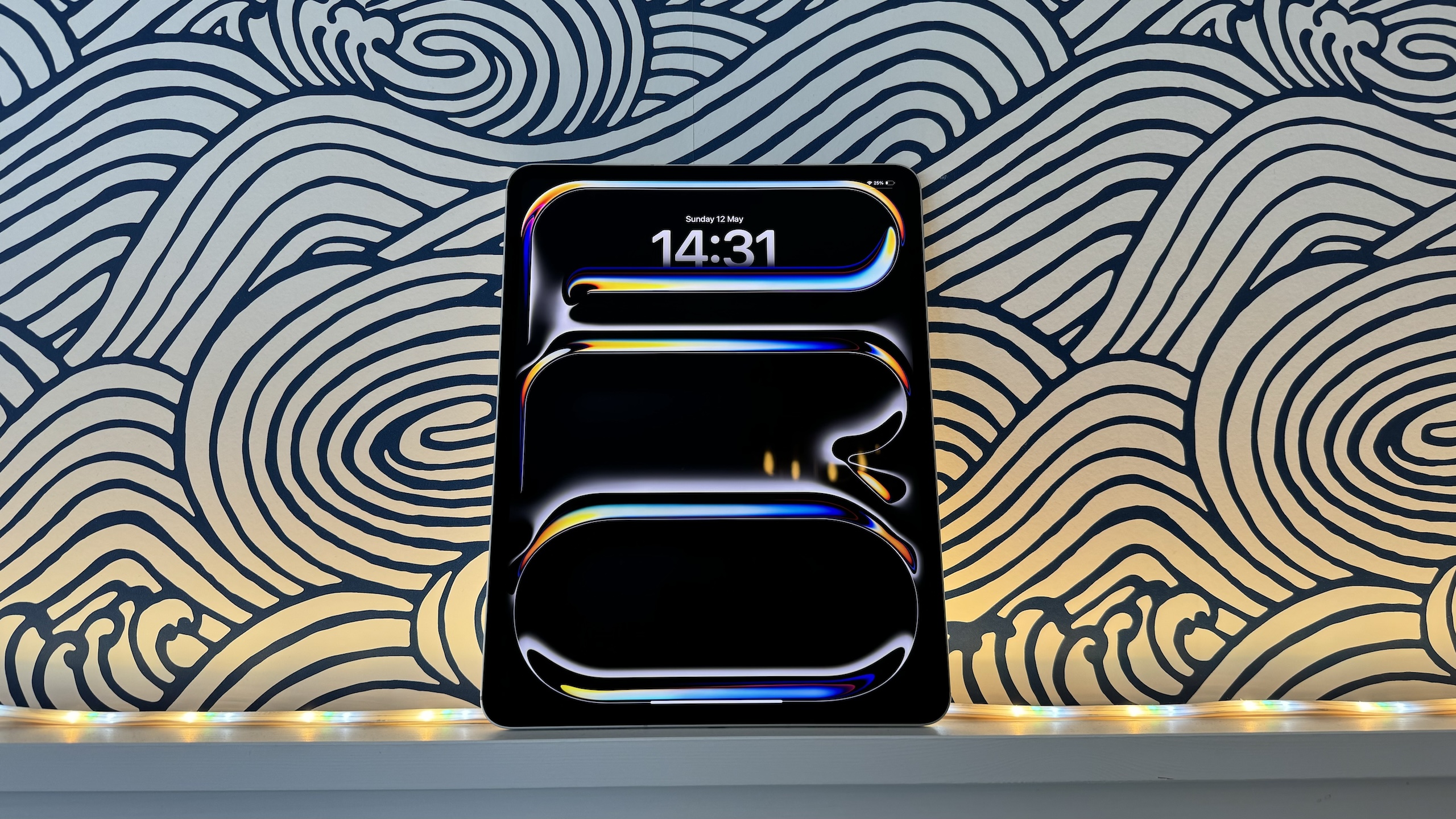
Good things come to those who wait? It rings true with Apple’s new iPad Pro line-up. Though it’s taken almost two years for them to arrive, Apple’s pro-oriented top-tier tablets have been given a thorough spruce up that brings them even closer to the capabilities of a MacBook than ever before.
They remain expensive, and the OLED display is not without its quirks. But the iPad Pro has more power than iPadOS knows what to do with thanks to the debut of the M4 chip, and great accessories to make all sorts of workflows accessible on the go.
It’s now just the underlying iPad software that’s holding back the average user from being able to get real work done on an iPad Pro — if the M4 was a sports car, iPadOS keeps it in second gear. But there’s never been a better tablet to just relax with than these latest iPad Pro models — nor an industrial design more remarkable from Apple’s labs.

iPad Pro (2024, M4): Price and availability
The M4 iPad Pro is available to buy now, hitting store shelves on May 15, 2024. It’s available in two sizes, 11-inch and 13-inch, and two colors, silver and grey.
We’ll look at the price breakdown for the 11-inch model first. It starts at $999 for 256GB of storage, going up to $1,199 for 512GB, $1,599 for 1TB, and $1,999 for 2TB. To have a cellular connection in addition to Wi-Fi for on-the-go connectivity you’ll need to stump up an additional $200. If you want the new nano-texture glass screen for easing glare and reflections, that’s an additional $100 — and note that’s only available once you’ve stumped up for either the 1TB or 2TB storage configuration. It’s not available on models with smaller capacities.
That entry-level cost is $200 higher than its entry-level M2-powered predecessor, though it’s not a like-for-like comparison, with double the starting storage capacity, and the all-new screen tech. A fully spec’d 11-inch iPad Pro sets you back $2,299.
Moving onto the 13-inch M4 iPad Pro, prices start at $1,299 for 256GB of storage, going up to $1,499 for 512GB, $1,899 for 1TB and $2,299 for 2TB. Again, cellular and nano-texture glass cost an additional $200 and $100 respectively — and again, nano-texture glass requires you to configure a 1TB or 2TB iPad Pro.
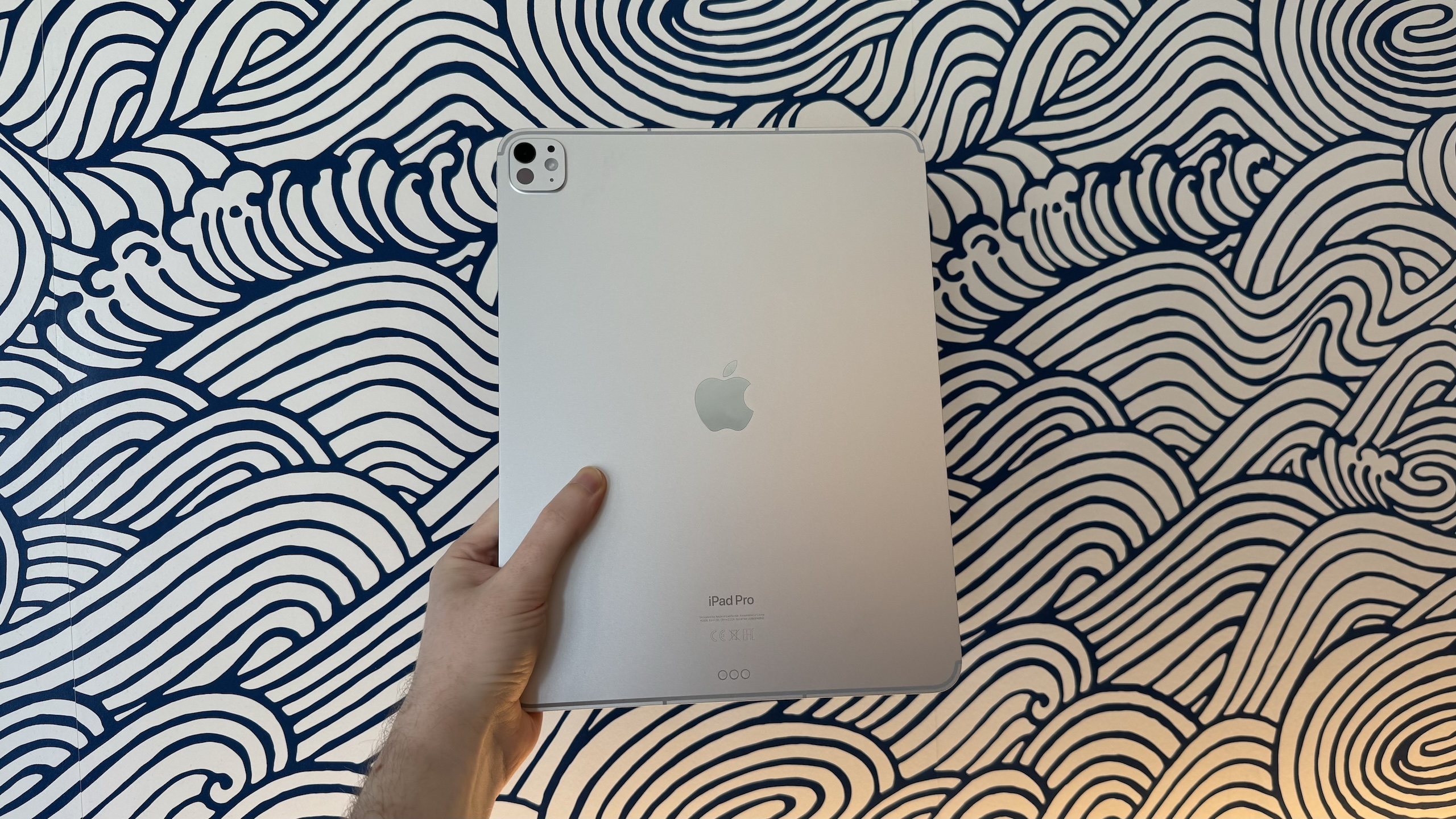
The entry level cost is again $200 higher than the previous generation, but again there’s double the storage than was offered at the lowest rung last time around. The top-spec 13-inch iPad Pro would cost $2,599.
But this tells only half the story. Apple has also quietly locked RAM and CPU core count caps in, based on the storage configuration you pick up. It’s not immediately clear on the purchasing pages, but dig deeper into the spec sheet and you’ll see that if you purchase a 256GB or 512GB model, you’ll get 8GB of RAM and an M4 chip with nine CPU cores and three performance cores. Jump up to 1TB and 2TB configurations, you’re also getting 16GB RAM and 10 CPU cores with four performance cores. (All models have 6 efficiency cores). Though the choice is partially out of users’ hands, it makes buying an iPad more Mac-like than ever before.
Apple has also quietly locked RAM and CPU core count caps in, based on the storage configuration you pick up.
It’s an expensive proposition then, and that’s before factoring in $129 for the new Apple Pencil Pro plus the cost of a newly-revised Magic Keyboard — $299 for the 11-inch model, $349 for the 13-inch model. A person looking to get some actual productivity work done on an iPad Pro should certainly consider buying one; those two accessories (the Magic Keyboard especially) are fundamental to basically any workflow. All in, you’re quickly into MacBook Pro price territory here, even if the premium build quality and features do keep it an attractive price-to-performance proposition.
For our review, we’re looking at the 13-inch model with Wi-Fi and cellular connections in a silver finish with 1TB of storage. It’s got the standard glass screen rather than the glare-blocking nano-texture finish. The configuration would set you back $2,099.
iPad Pro (2024, M4): Design
Let’s not beat around the bush — the iPad Pro for 2024 is a fantastically beautiful tablet, and that’s in large part down to its new screen technology.
Apple calls its take on OLED in the M4 iPad Pro an ‘Ultra Retina XDR’, which makes use of a ‘Tandem OLED’ configuration to achieve its stunning look. There’s a lot of buzzwords here, but essentially Apple’s engineers stacked two OLED panels on top of one another, using the light emitted from both panels to boost brightness across the screen.
And for the most part, it’s gorgeous.

Apple manages to hit 1,000 nits of full-screen brightness with the display, reaching heights of 1,600 nits when pushed to peak for HDR content. Previous generations only managed a 600 nits full-screen brightness level for SDR content, so the latest models can run brighter all the time, whether you’re watching HDR content or not. At its best it’s a genuinely jaw-dropping display, especially when compared to the LCD screens in Apple’s cheaper tablets. It’s a more subtle improvement next to the Mini LED found in older 13-inch iPad Pros, but still notable — specular highlights dazzle (the sort of moments where pin-prick stars in a night sky sparkle remarkably), and there’s greater precision in motion, too.
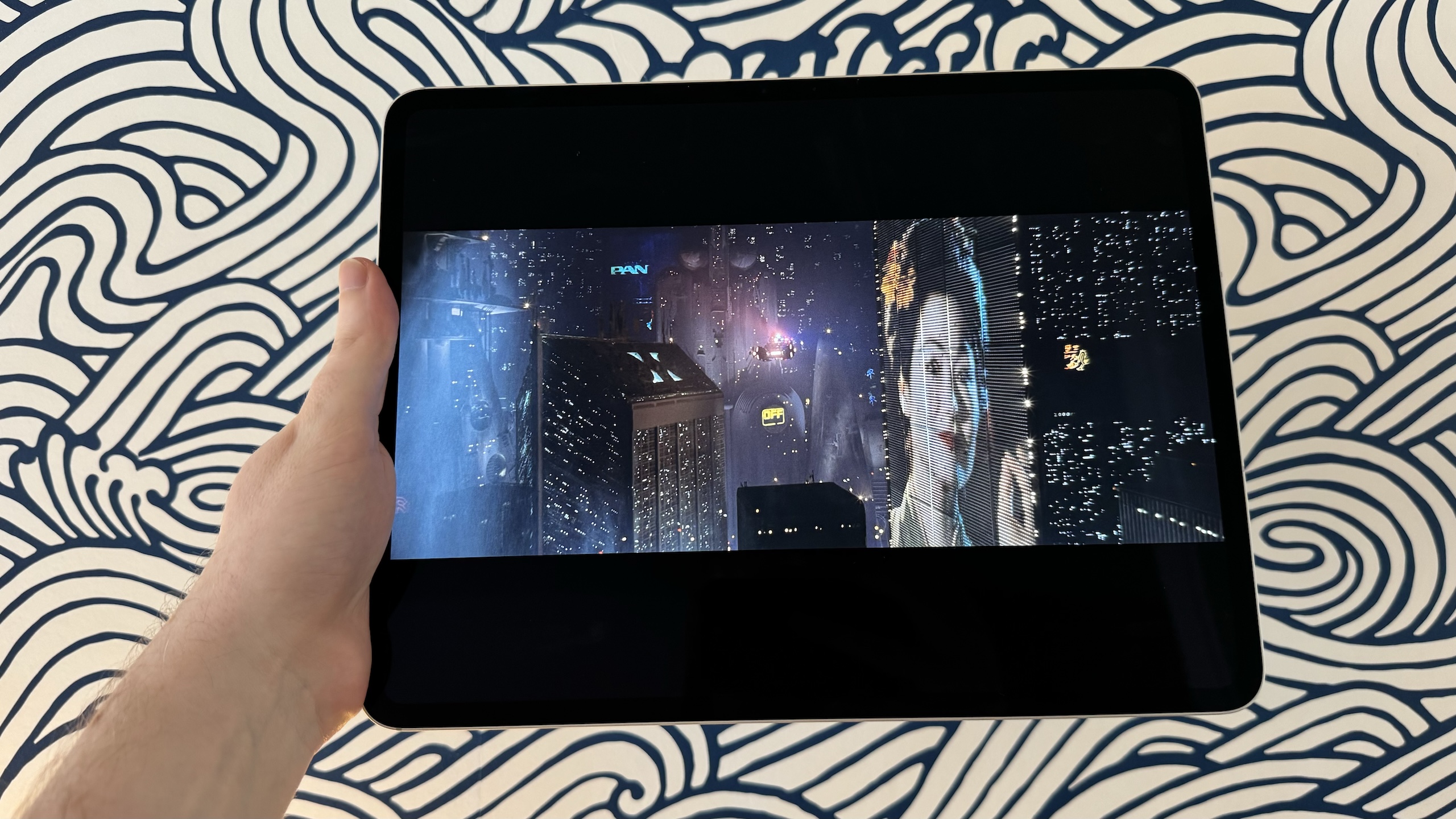
A great example of this was a run through of the game Hades on the iPad. Its comic-book style is a vibrant mix of inky blacks and bold primary colors, while the action is fast paced. The iPad Pro made it look as if it was being animated across the night sky itself, with combat flashes exciting the screen without diluting the depth of total black colors in other areas. Fast-paced motion looked good too (the tablet maxes out at a ‘ProMotion’ refresh rate of 120Hz), and seemed more responsive than on the Mini LED version — the difference is minute, though where I’d note a slight blur on the Mini LED display, the OLED was flawlessly smooth.
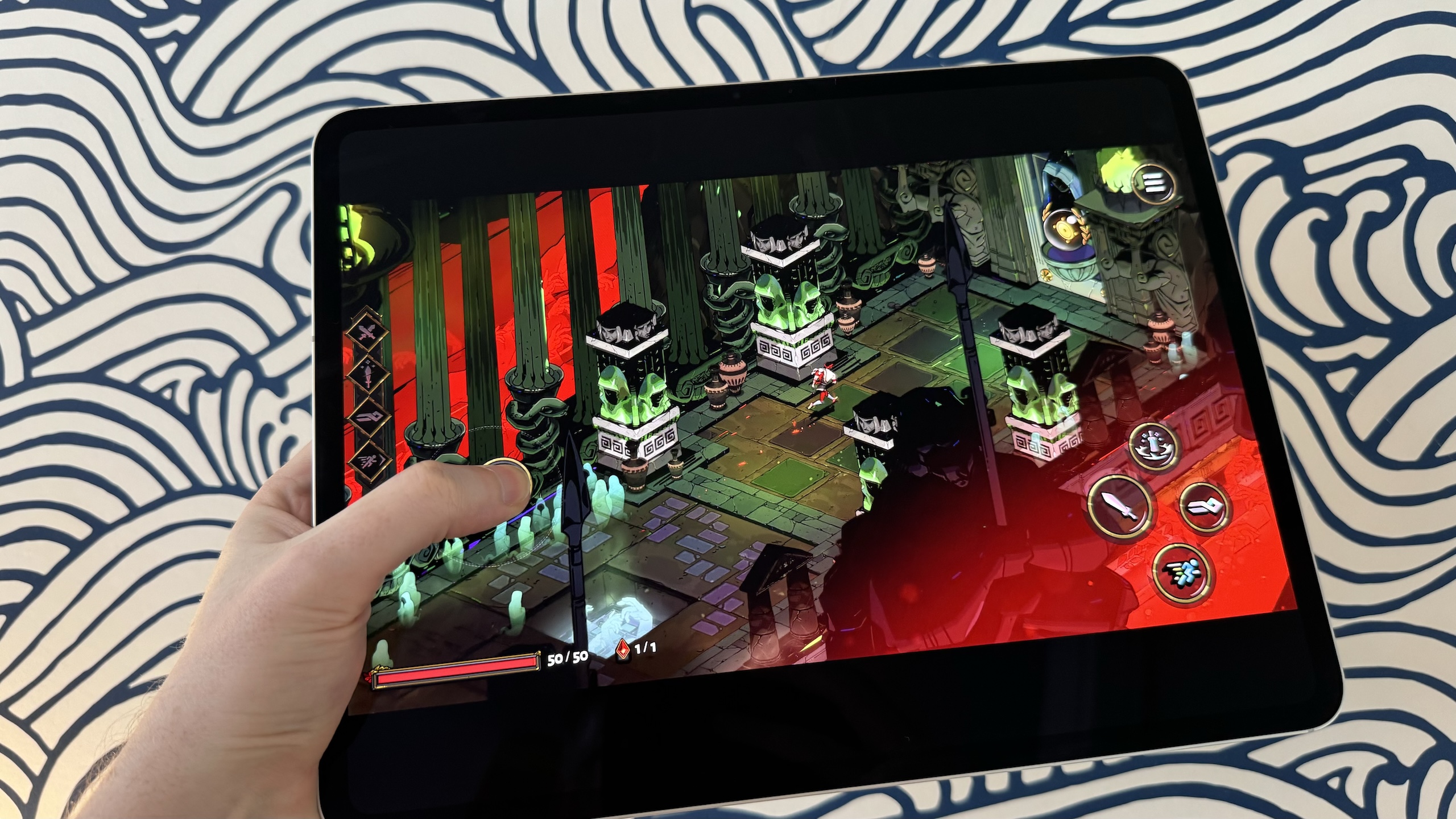
But! It’s not perfect, and I’ve run into a particularly strange issue on the display that gave me cause for concern. When watching HDR content, I’ve noticed a highlights problem around certain blue tones. When navy / indigo blue shades are onscreen in HDR content, highlights can become blown out to the point that they’re basically white. The best way to describe this would be to look at the creases on a character’s blue shirt — instead of being shades of blue, they become like a white spider’s web over the affected area, as if the image processing engine is getting confused as to how to best portray highlights in that zone.






It’s pretty specific, admittedly, and I’ve only spotted it in a few seconds of footage, but I’d be worried it hints at a wider image processing problem, and that more time watching content on the screen will throw up more examples of the issue. I’ve run the exact same footage on different displays — including Apple’s own 11-inch LCD M2 iPad Pro — and didn’t come across the same problem. I’ve reached out to Apple for comment on the issue and will update the review if I get a solution.
When navy / indigo blue shades are onscreen in HDR content, highlights can become blown out to the point that they’re basically white.
Another thing I would note — and this is more a feeling than something I’ve been able to confirm yet — is that the automatic brightness adjustments seem a little more aggressive than with previous iPads. Apple says it uses advanced screen safety algorithms to block burn-in on its new iPads (you’d assume that’s sporadic pixel shifting and a closer eye on brightness levels). But the company hasn’t stated exactly what’s working under the hood to prevent damage to this pricey screen. My gut so far suggests that it's leaning on the side of caution with automatic brightness controls then — though you can always override this in Control Center.
Older iPad Pro generations have reserved the previously-top-end display technology – Mini LED – for the 13-inch models, but with the M4 range OLED comes to both 11-inch and 13-inch models.

Quirks aside, that Apple has squeezed all this into such a slim frame is incredible. In addition to the new screen tech, Apple reworked the entire chassis and internal layout of the iPad Pro to make the thinnest tablet it’s ever made. The 11-inch iPad Pro now measures 249.7mm x 177.5mm x 5.3mm. But the 13-inch model is, remarkably, thinner still. It measures 281.6mm x 215.5mm x 5.1mm. That’s the thinnest product Apple has ever made — thinner than its iPhones, thinner even than the tiny old iPod Nano. Presumably, Apple’s been able to shift some of the internals around a bit as afforded by the extra surface area to tighten the belt straps there, offsetting thickness with the thermal efficiency provided by the M4 chip generation. And those worried about a repeat of ‘Bendgate’ should be able to rest easy — Apple says its reinforced the internal frame to keep the new iPad Pro safe from damage.
Despite that slim chassis, the onboard speakers still sound pretty good, too — four speakers, arranged in landscape stereo, are clear with reasonable bass response, and certainly enjoyable enough to watch a TV show or take a call on.
If it's set to potentially replace a laptop, weight is important — not just of the tablet itself, but with its accompanying Magic Keyboard, too. The 11-inch iPad Pro weighs just 446g, with the 13-inch model weighing 582g – a modest weight reduction for the 11-inch version over its predecessor, but a far greater saving of around 100g (marginally more or less, depending on whether or not you opt for the cellular version) on the 13-inch model. And you really notice that in the hand — it feels much easier to balance and hold one-handed, useful for on-the-go Apple Pencil Pro sketching. Pop the Magic Keyboard on the 13-inch iPad Pro and the whole package feels lighter than before as a result. Holding a MacBook Air in one hand and the Magic Keyboard-equipped iPad Pro in the other, I was hard pressed to tell the difference in weight between the two.
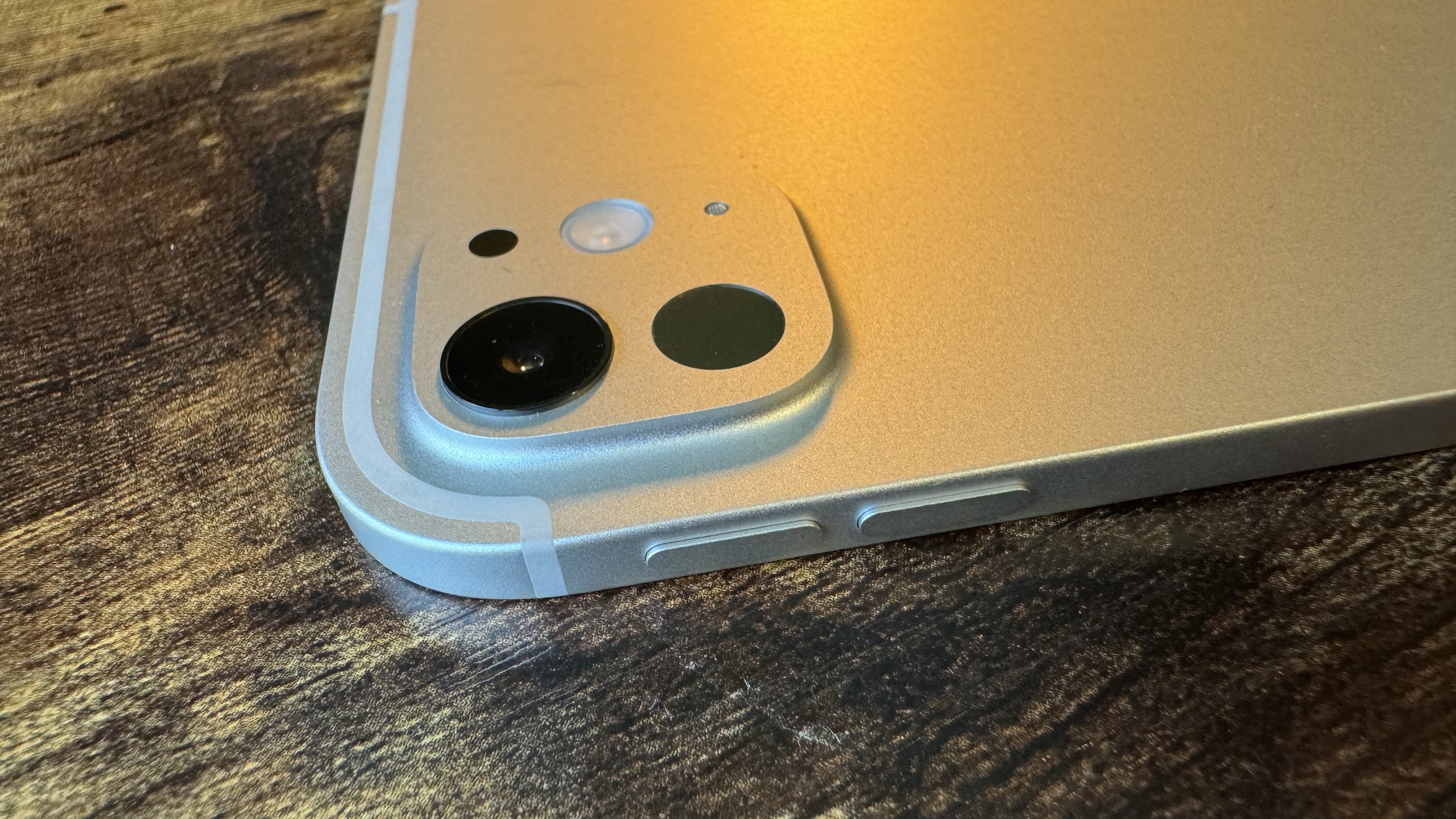
Other external elements (cameras aside, which we’ll discuss separately) remain as expected — volume buttons sit on the right-hand edge of the iPad, with a power button on the top right edge. A magnetic connector for charging and pairing the Apple Pencil Pro and Apple Pencil USB-C also sits down the right-hand edge. Three microphones pick up audio, one on the top edge, two on the right. The bottom edge houses the ever-handy Thunderbolt / USB 4 port, while low down on the rear of the tablet is the Smart Connector that magnetically snaps to the Magic Keyboard accessory.
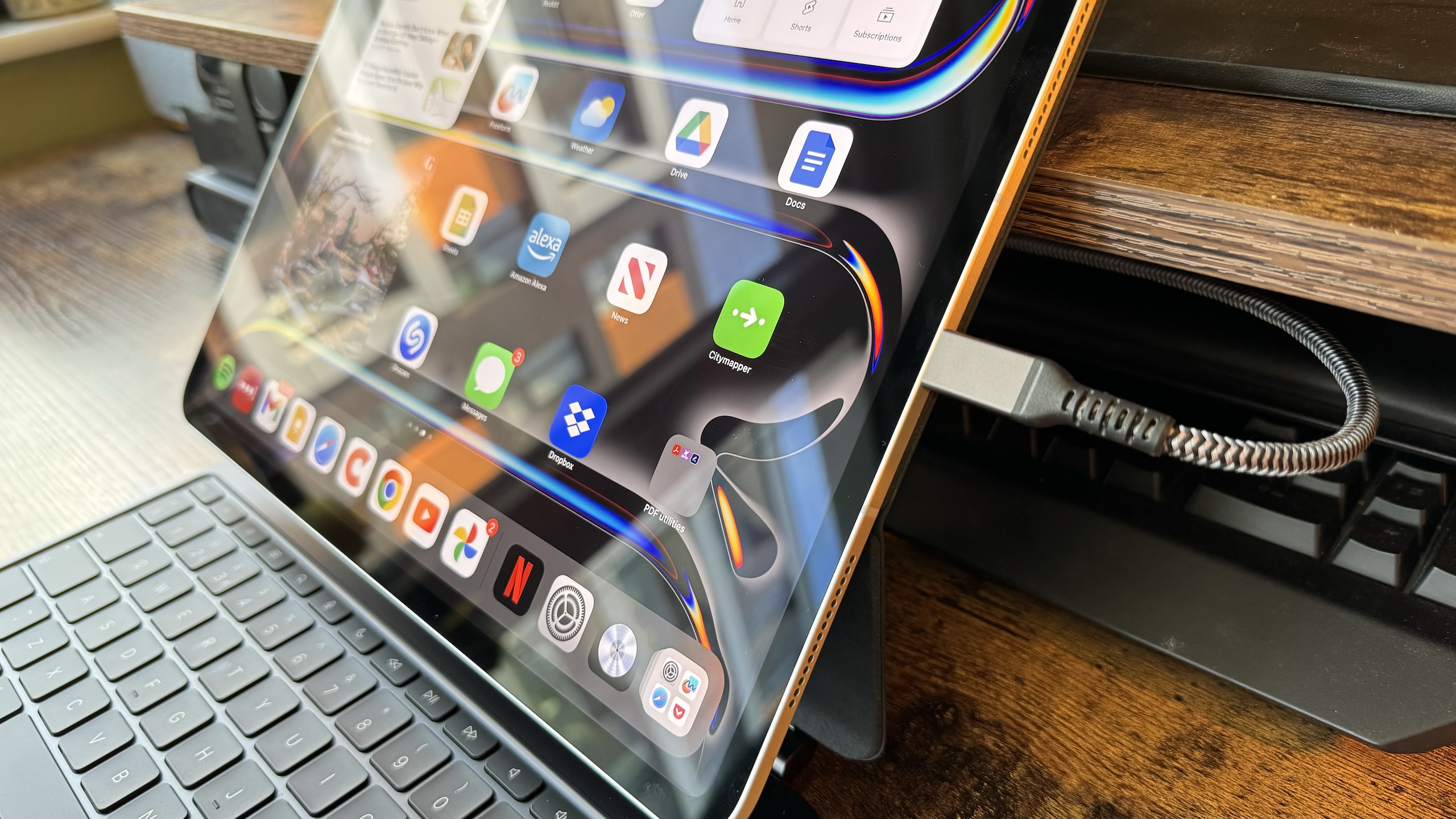
It’s still a MagSafe back to the iPad Pro, letting it magnetically attach to cases and stands, but in a neat touch Apple has introduced more copper into the rear Apple logo, helping to dissipate heat generated by the powerful M4 chip. Thermal management was good throughout testing — even with demanding 3D applications, the iPad Pro only ever got warm to the touch, rather than hot.
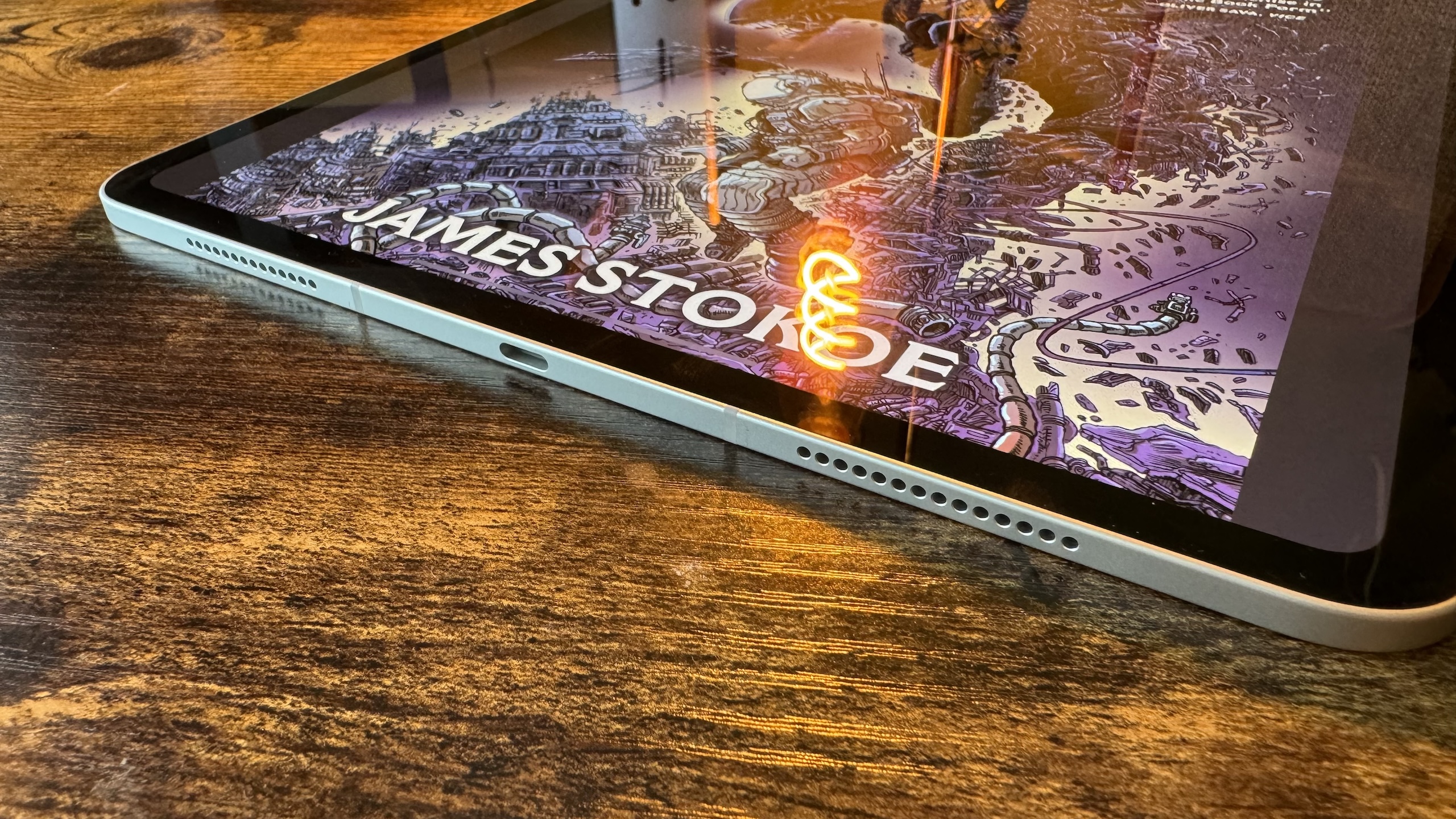
In terms of connectivity, you’re getting speedy Wi-Fi 6e and stable Bluetooth 5.3 wireless connections for data and accessories. Interestingly, those in the US looking to purchase a cellular model can no longer benefit from mmWave 5G mobile data connections, which provide fast connection speeds at short distances from cell towers. Instead you’re left to rely on sub-6GHz bands for 5G — better over longer distances, but comparatively slower. It’s a feature that was only ever present in US iPad models, so won’t be missed elsewhere around the world.
As for what you get in the box, that depends on where you’re based and what screen style you opt for. Everyone gets a 1m USB-C charge cable, but you won't get a charging brick in the UK and EU. Other territories also get a 20W USB-C power adapter, though the iPad is capable of fast charging at higher speeds with other chargers. If you get the anti-reflective coating on the screen, you’ll also get a polishing cloth thrown in — an interesting inclusion that suggests that specific display finish might require a more delicate touch when cleaning compared to the standard finish in order not to damage it.
iPad Pro (2024, M4): Cameras
Quite significant changes have been made to the iPad Pro cameras, both rear and front.
You’ll use the front-facing camera most, since it’s responsible for Face ID. That’s now moved to a landscape orientation position within the right-hand bezel of the iPad. Following in the footsteps of the 10th-gen iPad, it makes sense: This allows for more natural framing during FaceTime calls primarily, and Apple expects you’ll use Pro iPads in landscape mode more often than in portrait for work purposes (docked with the Magic Keyboard, for instance). If you’re right-handed (you and about 90 percent of the world’s population), you might need to get used to gripping the iPad a little lower down its frame as you log in, for fear of obscuring that Face ID camera.
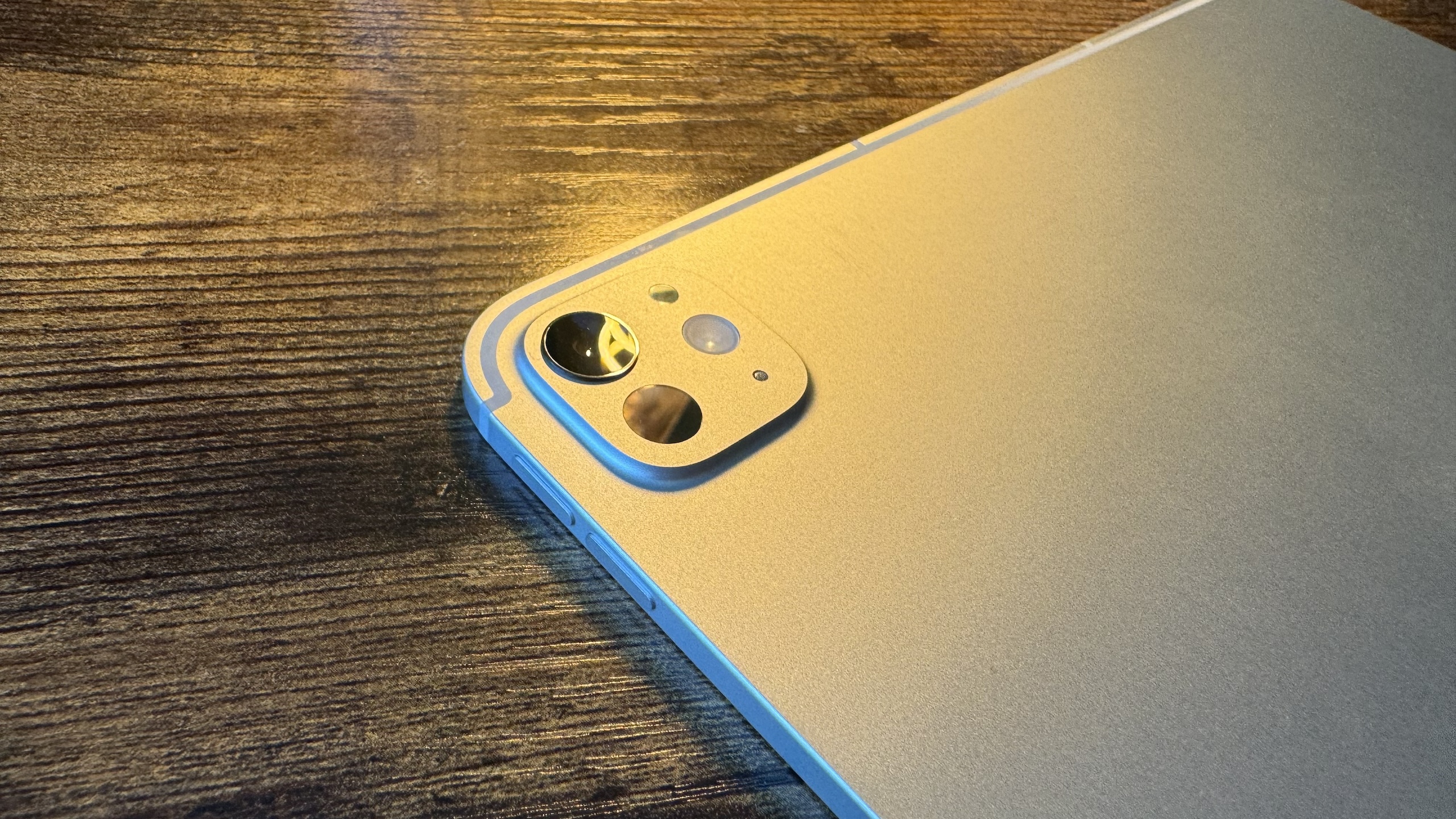
The rear camera gets tweaked, too — I’d say for the better, though in ways that might not be appreciated by those who regularly use their iPads for photography. The ultrawide camera on the rear is gone in favor of a revised ‘Adaptive’ True Tone Flash. Apple thinks Pro owners will scan documents more often than they capture beautiful landscape photos, and the Adaptive True Tone Flash works alongside AI to take the clearest possible scans of your papers. When it recognizes a document, it’ll take multiple snaps at once at different exposures and with different flash levels, and then use AI to ensure clarity across the page, even going so far as to remove any shadows you may cast onto the page when capturing the photo scan itself. That’s a fair trade in my book.
Otherwise the main camera still performs well, shooting 12MP stills, with a 5X optical zoom, and capturing great HDR video in formats up to 4K 60fps and 4K 30fps in ProRes.
iPad Pro (2024, M4): Performance
For the first time in the history of Apple’s homegrown silicon, a new generation of chip has made its debut in an iPad. The 2024 iPad Pro has skipped past the M3 generation entirely, launching with the all-new M4 chip.
Using a second-generation 3-nanometer process, it packs 10 CPU cores and a new 10-core GPU that builds upon all the intensive 3D advancements that M3 had. Not only are you getting 1.5x the CPU performance that the M2 iPad Pro managed, but you’re getting the hardware-accelerated ray-tracing, dynamic caching and mesh shading that made M3 so exciting, in an iPad for the first time. Geekbench 6 scores clock it higher than even Intel’s top-tier Core i9-149000KS in single core scores — we counted a single core score of 3675. It’s a similarly impressive score for multi-core at 14546. Though it’s not a like-for-like comparison given different thermal profiles, the M3 MacBook Air 15-inch managed a single core score of 3132 and a multicore average of 12075. That’s a giant 17.3% single core jump, and a huge 20.5% multi-core leap. The M2 multi-core average on iPad sits at 9622 — an even bigger 51.2% jump from previous iPad Pro generation to new iPad Pro generation.
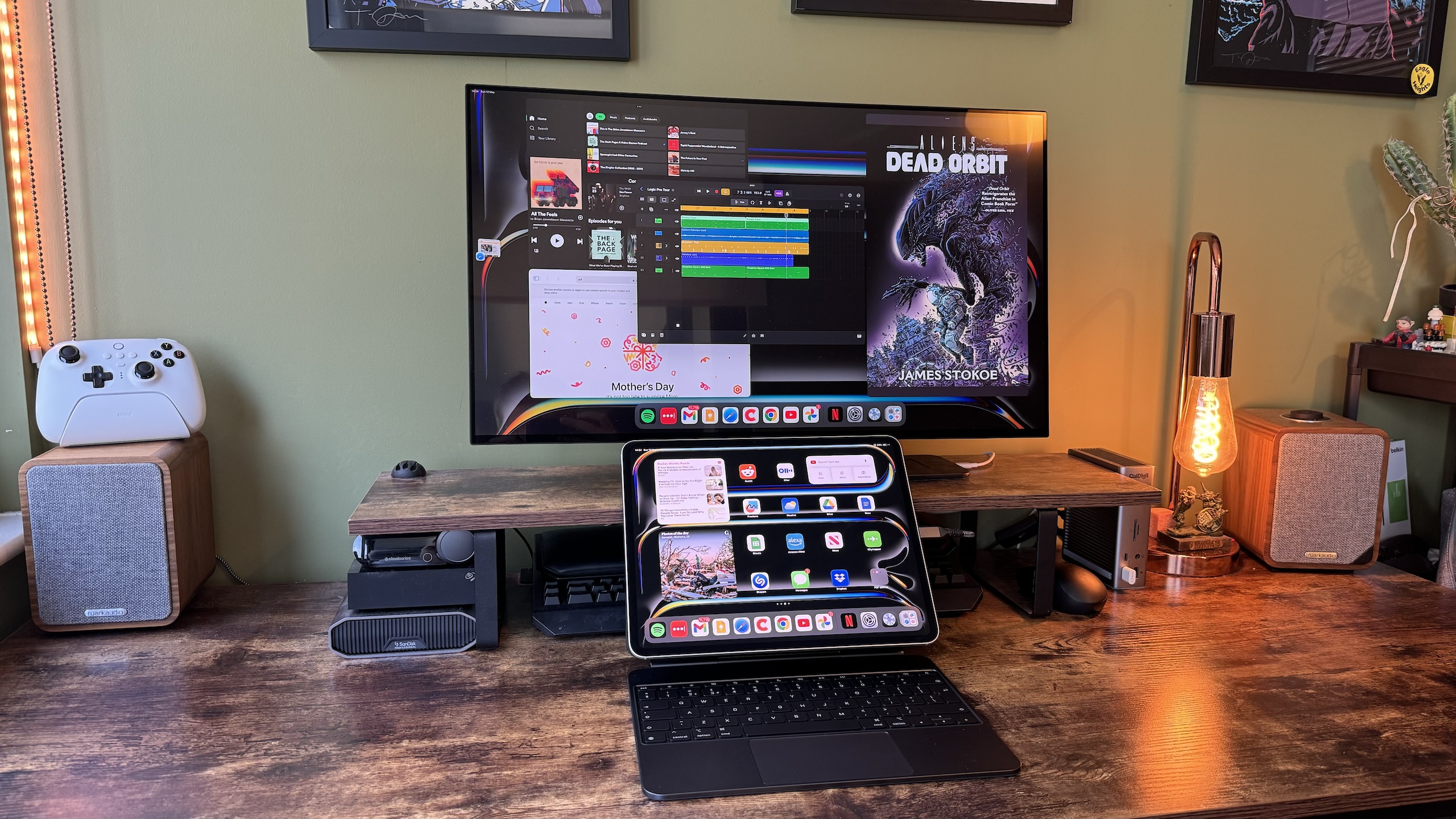
Though it’s more difficult to get a read on machine learning performance, the Neural Engine improvements on paper are impressive and have huge potential. It’s Apple’s ‘fastest ever’, capable of 38 trillion operations per second (TOPS). That’s a spec you’ll want to get familiar with, as it’s the key to what kind of artificial intelligence performance you can expect from a device — specifically, on-device performance, where the work is being done locally as opposed to fed in from some cloud-based AI super machine. That’s important for Apple, which likes to push its privacy-first stance wherever possible.
Apple kept the AI chat around the new iPads relatively quiet at launch — it’s got to keep something in its back pocket for the 2024 WWDC conference. But you can see AI quietly at work in Apple’s most demanding apps, whether that’s isolating a moving subject from its background in real time during Final Cut Pro 2 edits or instantly adding AI ‘session player’ accompaniment to song sketches you want to flesh out in Logic Pro 2.
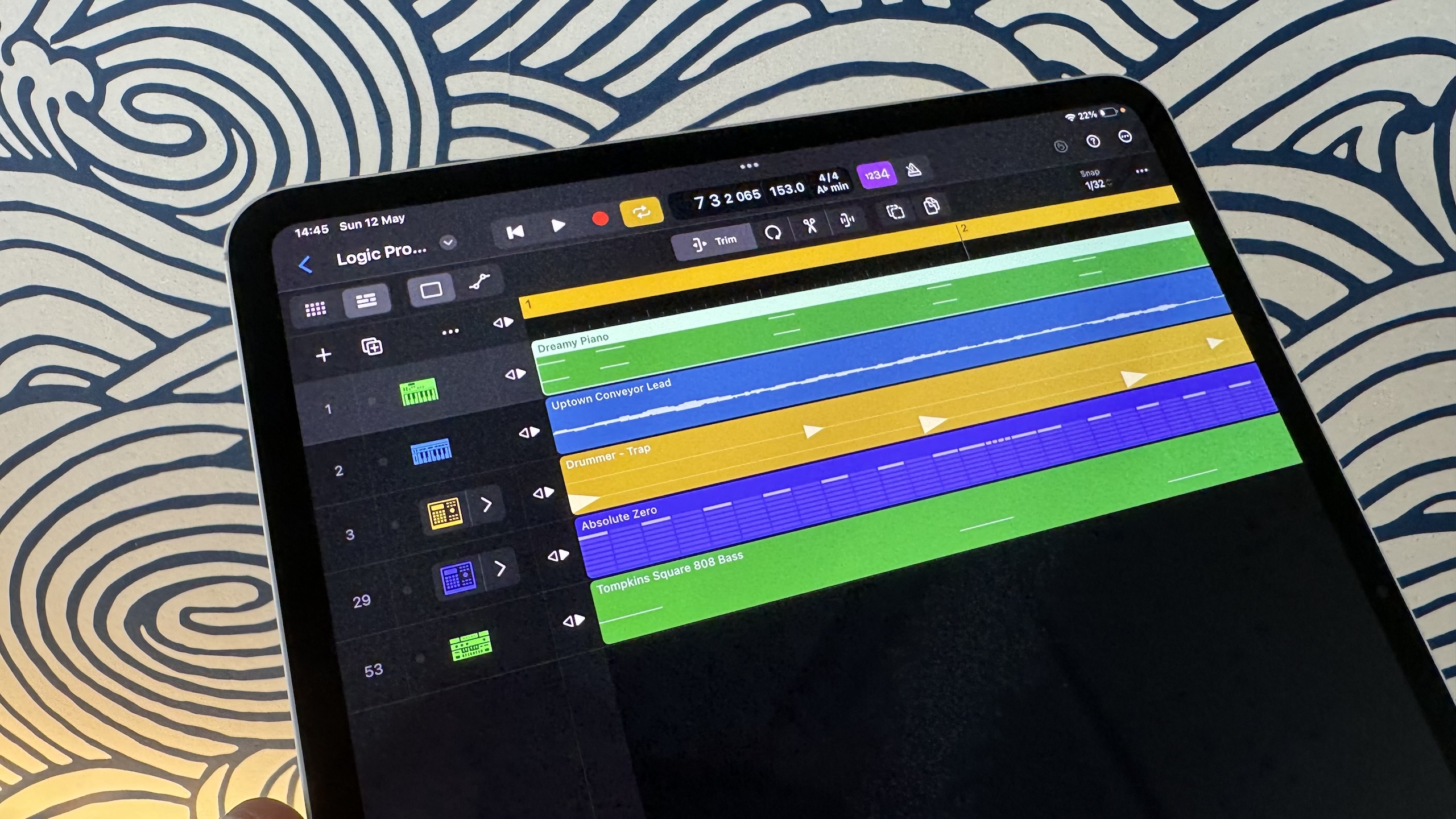
The limitations of iPadOS prevent this powerful processor from really stretching its legs.
It’s wildly powerful then, excitingly so. The iPad Pro happily feeds an external 5K Studio Display from its Thunderbolt port (maxing out at a single 6K monitor at 60Hz), and chews its way through complicated editing tasks from the likes of Final Cut Pro 2 and Logic Pro 2 without breaking a sweat. Using Stage Manager for iPad to keep these running alongside Procreate, web tabs and games, the M4 just laughs at the task.
But the limitations of iPadOS prevent this powerful processor from really stretching its legs on its debut device. iPadOS is simply frustrating to use when attempting to do any significant multitasking work, and Stage Manager remains at the heart of this frustration. Though much improved over its debut, Stage Manager still too often wants to second guess you, whether that’s snapping app panes to specific places on the screen, or removing ‘stages’ when opening several new ones. My biggest bugbear is the Recent Strip, which groups stages to the sides of your screen — to this day, I cannot tell you what combination of gestures, clicks, taps or cursor positions will reliably make it appear when hidden.
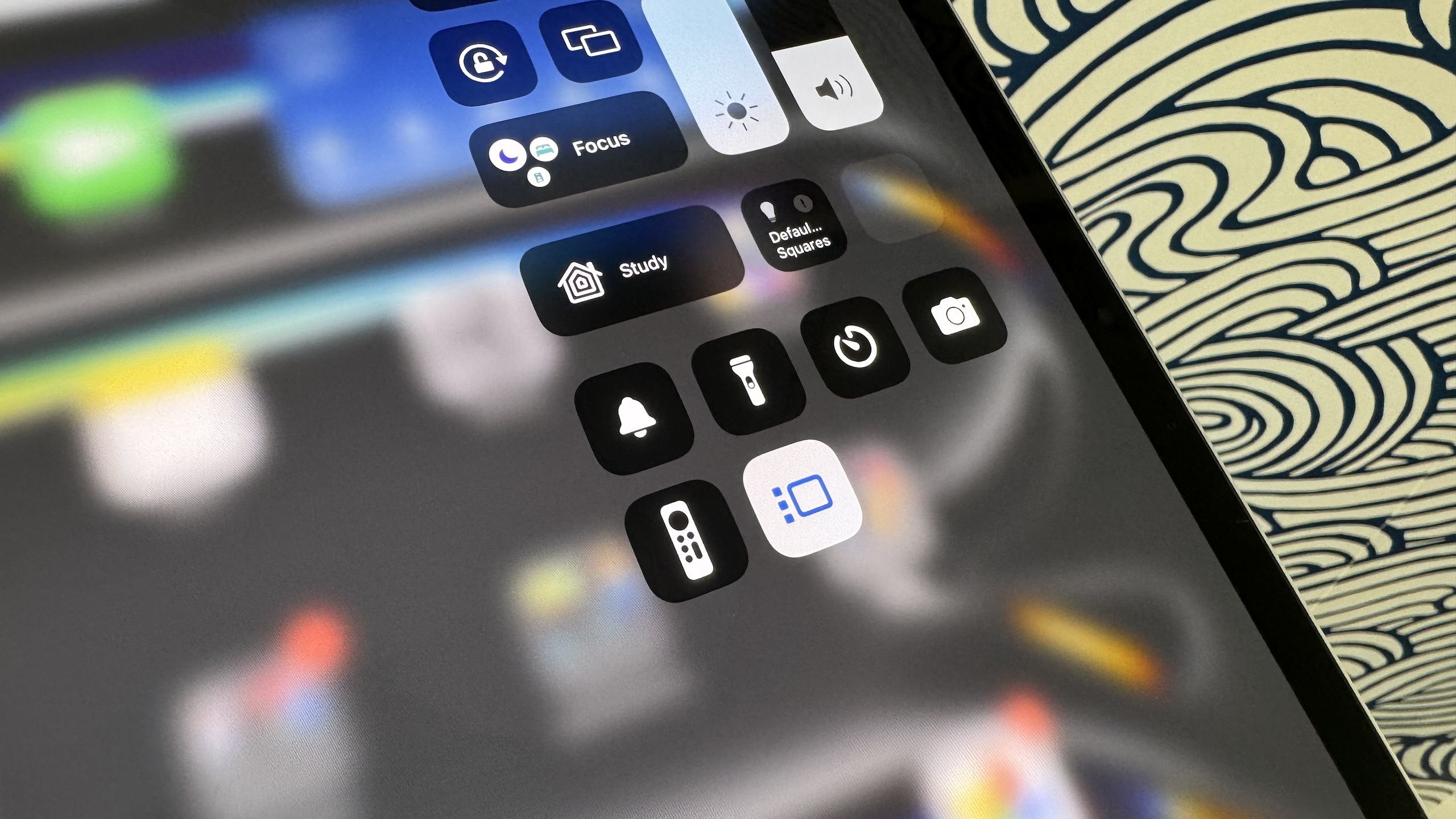
In terms of really pushing the iPad Pro’s M4, Stage Manager artificially limits how many apps can be open simultaneously, despite the M4’s power. You’re limited to four windows per stage per screen on iPad, a limitation not seen even on less powerful Macs running Stage Manager — and they need Stage Manager even less than iPad as they have a robust desktop view to use as standard. It just needs rethinking generally; if you’re going to have a supercharged chip, and position the iPad Pro as a genuine alternative to the Mac, the software needs to keep pace, not just in terms of apps, but the underlying OS holding it all together. Here’s hoping that, in addition to whatever AI stuff iPadOS 18 delivers at WWDC 2024, it also includes a thorough rethinking about how best to present multi-tasking opportunities on these devices.
iPad Pro (2024, M4): Battery
As with the M2 iPad Pro before it, Apple quotes 10 hours of wireless web browsing and video playback from a single charge of the M4 iPad Pro’s battery. (And 9 hours for similar usage over a cellular connection.)
You’ve got enough juice to get a day’s work done from the iPad Pro, plus some spare to entertain yourself with on the commute home.
As ever, it’s a sliding scale of expectation versus reality with battery calculations. If you’re hammering away at an online game like Diablo Immortal that harnesses ray-tracing with the screen dialed up to full brightness, you’re going to run that battery down significantly faster. But the estimate remains broadly true in my testing of the 13-inch 2024 iPad Pro with what I’d consider average usage — some video watching, some video calling, web browsing and document editing over the course of a day. You’ve got enough juice to get a day’s work done from the iPad Pro, plus some spare to entertain yourself with on the commute home. And you’ll get through a few films on a flight before needing to reach for that charger.
iPad Pro (2024, M4): Accessories — Apple Pencil Pro and Magic Keyboard
It’s hard to talk about the new iPad Pro without discussing its accessories. More than any other iPad in Apple’s range, the iPad Pro targets productivity, and a good keyboard is key to that equation. For the many artists who use the iPad as a drawing tablet, the Apple Pencil is even more important.
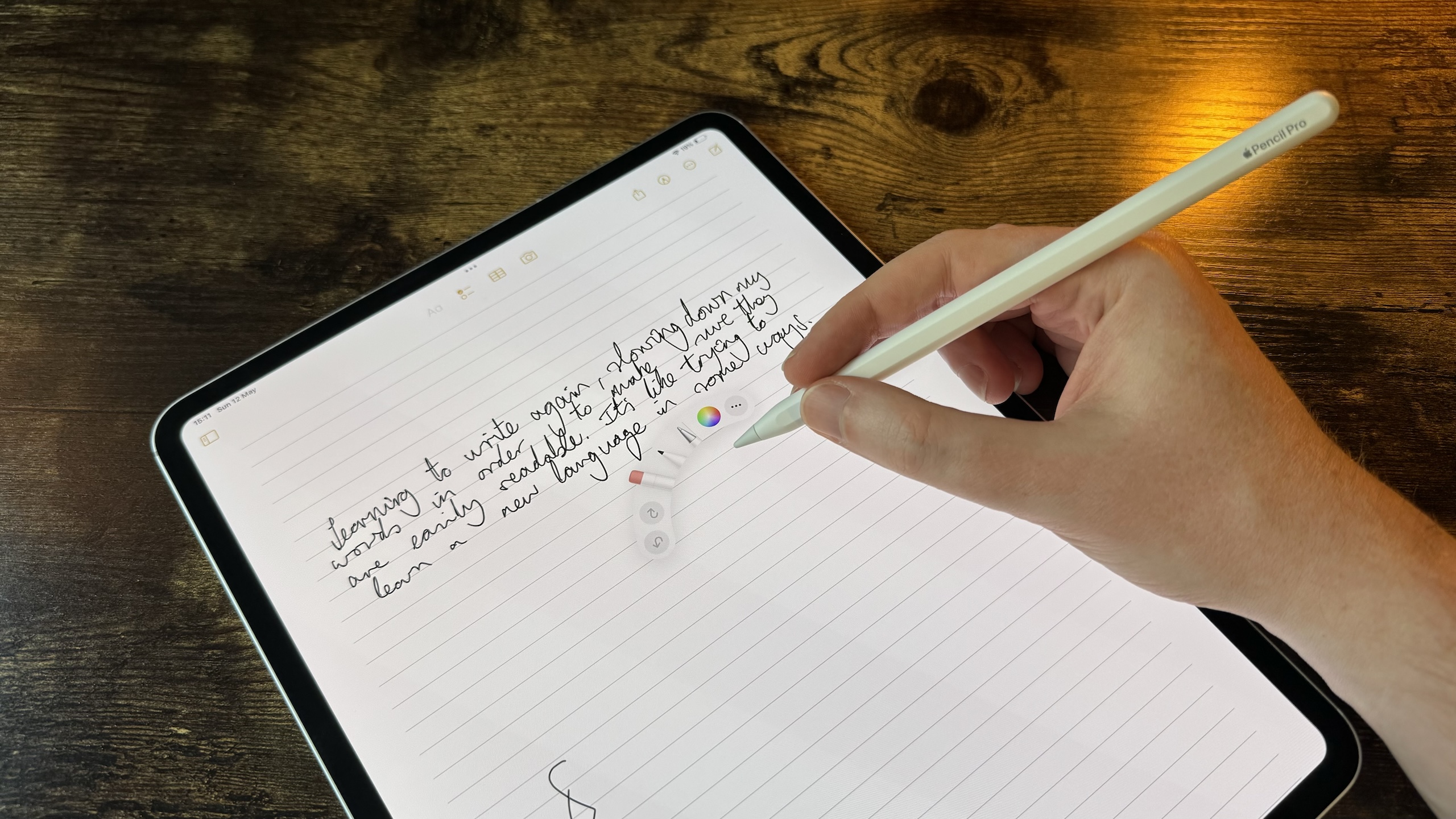
Let’s start with the Apple Pencil Pro as that’s the most interesting new accessory addition. Costing $129, it has four key improvements over its predecessor. First up is the inclusion of Find My network support, meaning the easily misplaced pen will now be easier to track down when lost. Second, there’s a new pressure-sensitive section near the tip of the Pencil Pro that can be used to access shortcuts — say, a brush dial or color palette. Third, there’s haptic feedback, handy for tactile feedback for menu selections, or snapping items to canvas grids. And last, there’s the introduction of a gyroscope in the barrel, which can be used to introduce calligraphic twists and flourishes to your strokes. Remember that all these new sensors and functions are open to app developers too, who can tailor them to whatever purpose they see fit.
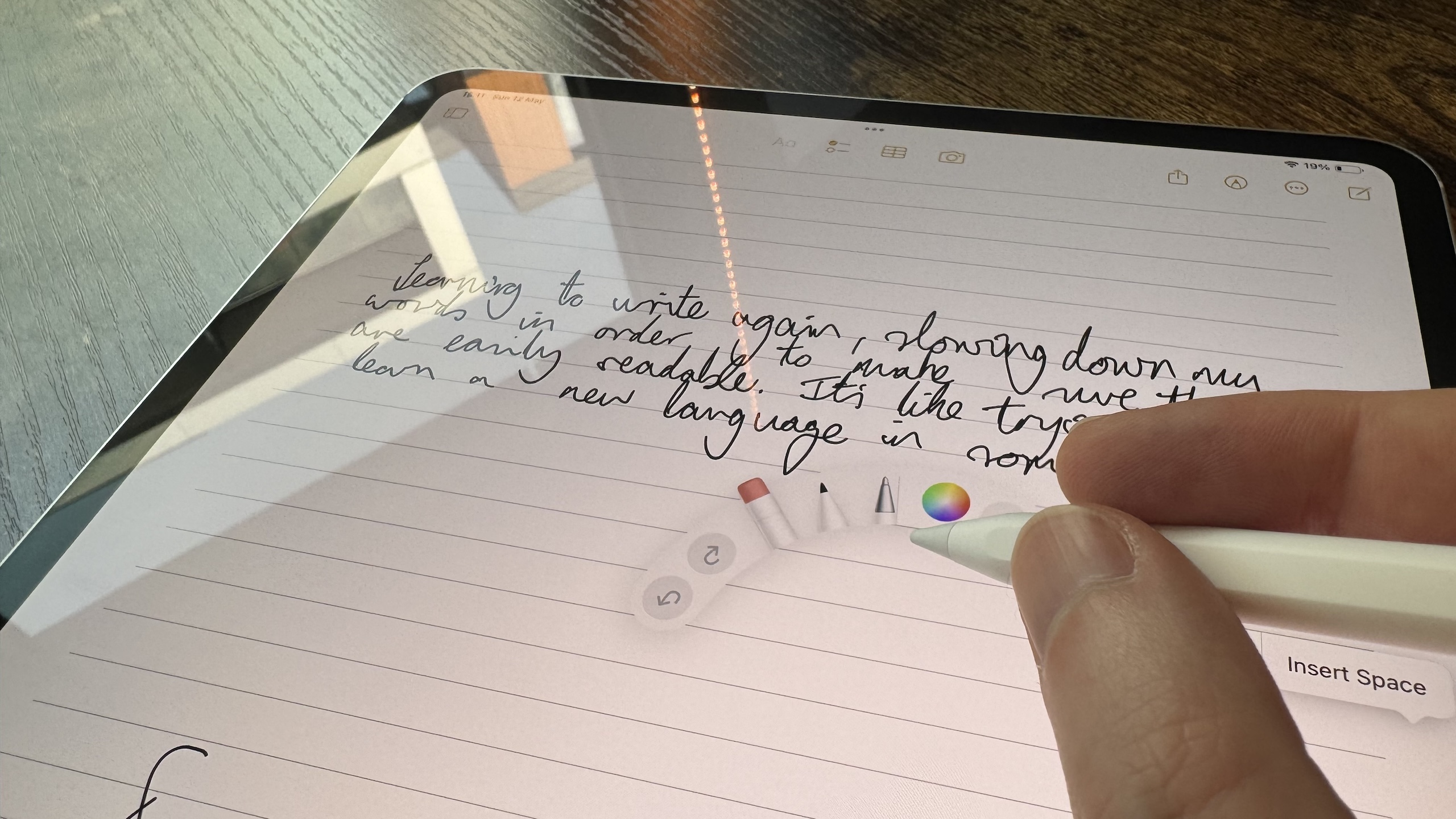
It’s a really lovely device — pairing and charging intuitively with a magnetic connection on the side of the iPad from 0% to 100% in just about 20 minutes. For artists, it’s hard to imagine picking up the iPad Pro without it.
The Magic Keyboard got a refresh too. It’s a less flashy change than the jump to Pencil Pro, but it’s just as apparent in use.
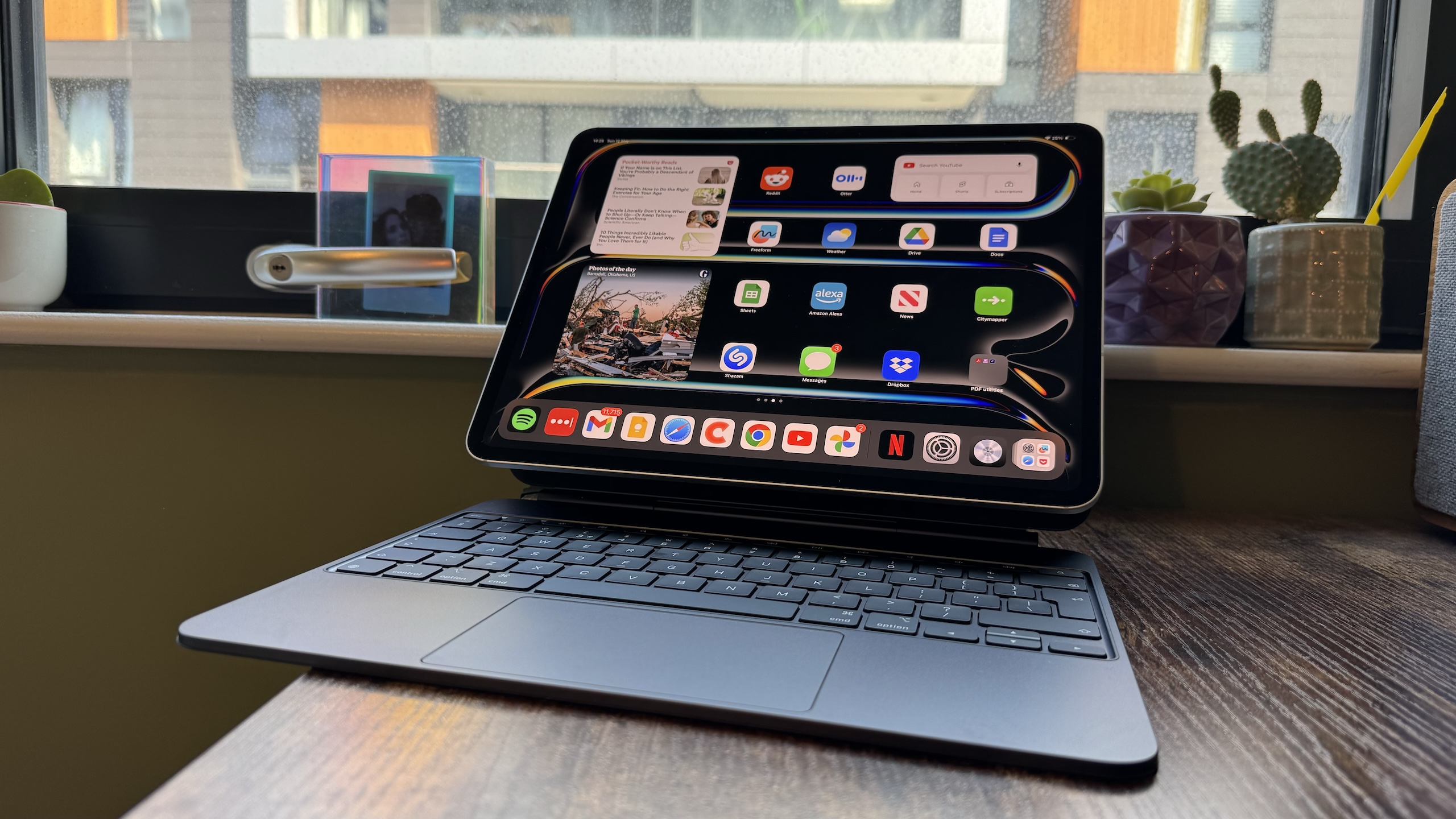
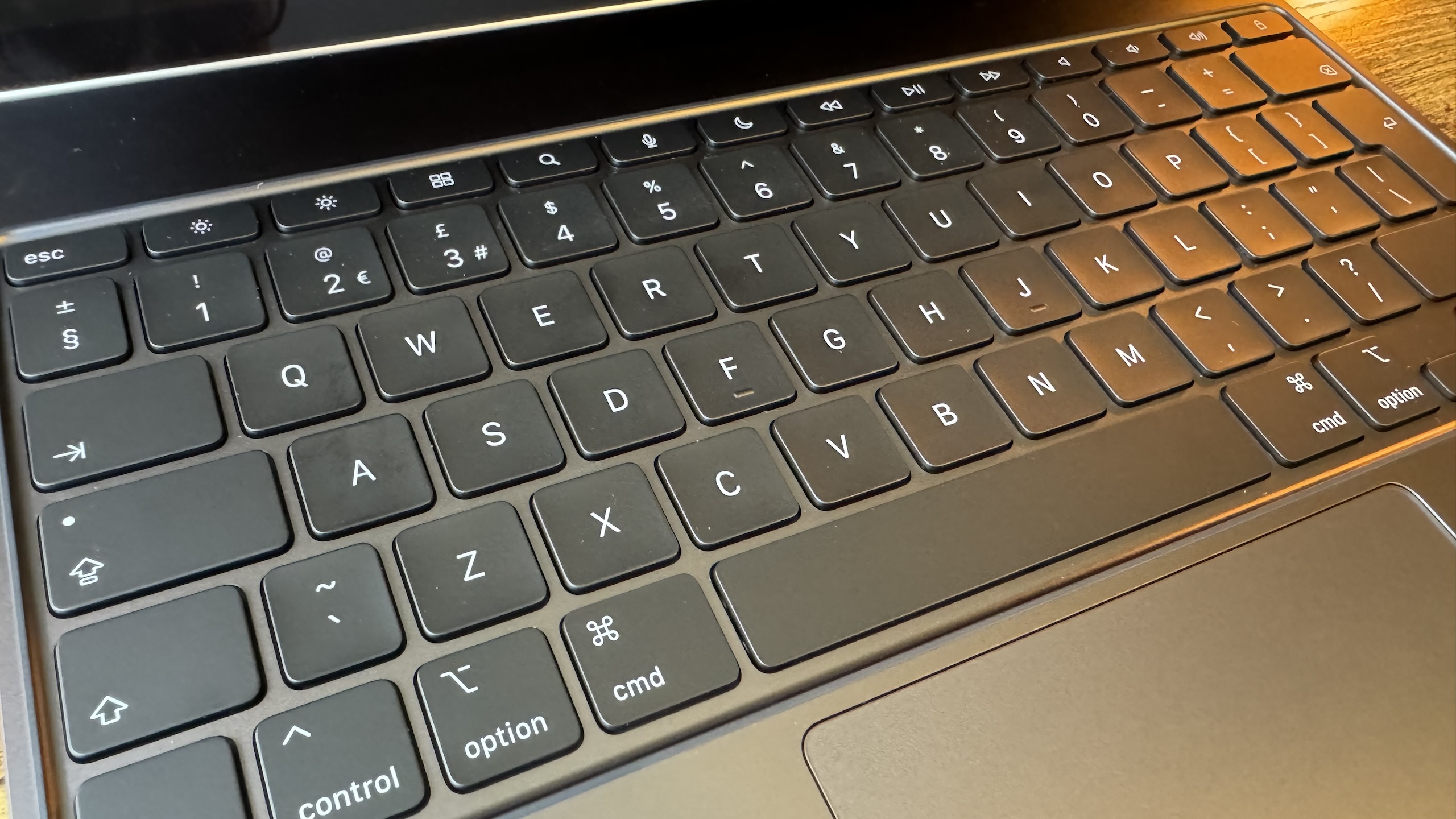
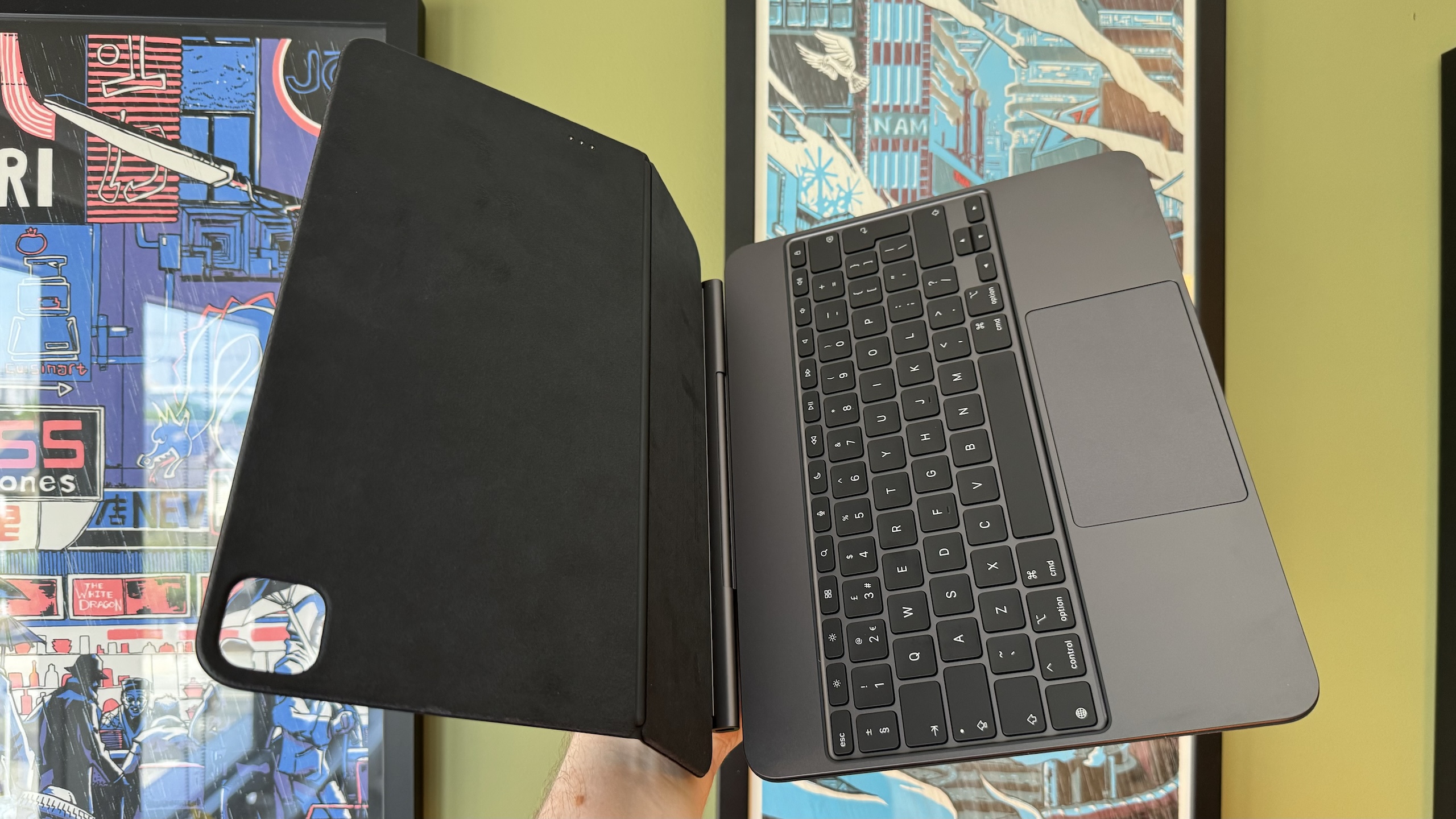
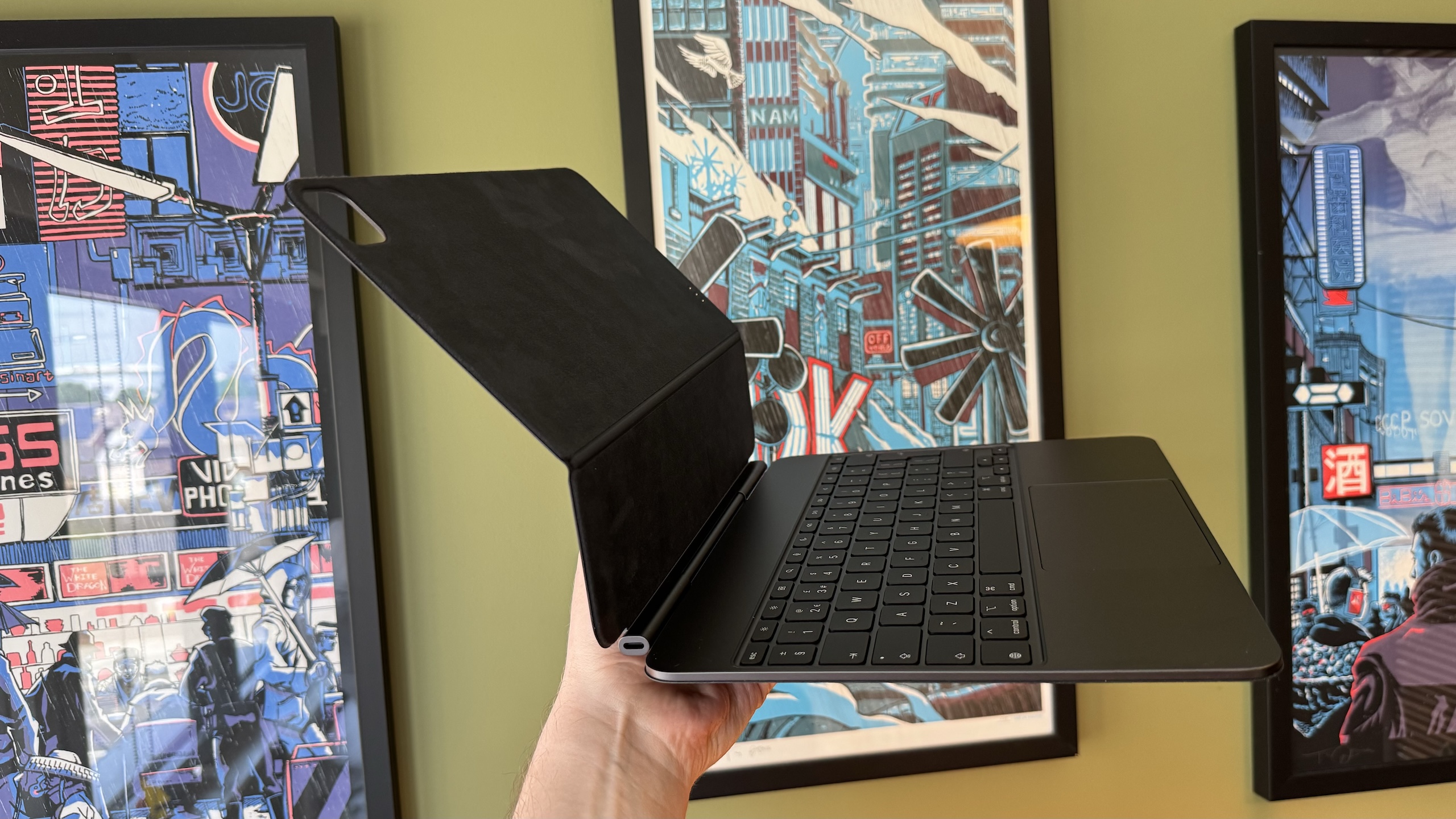
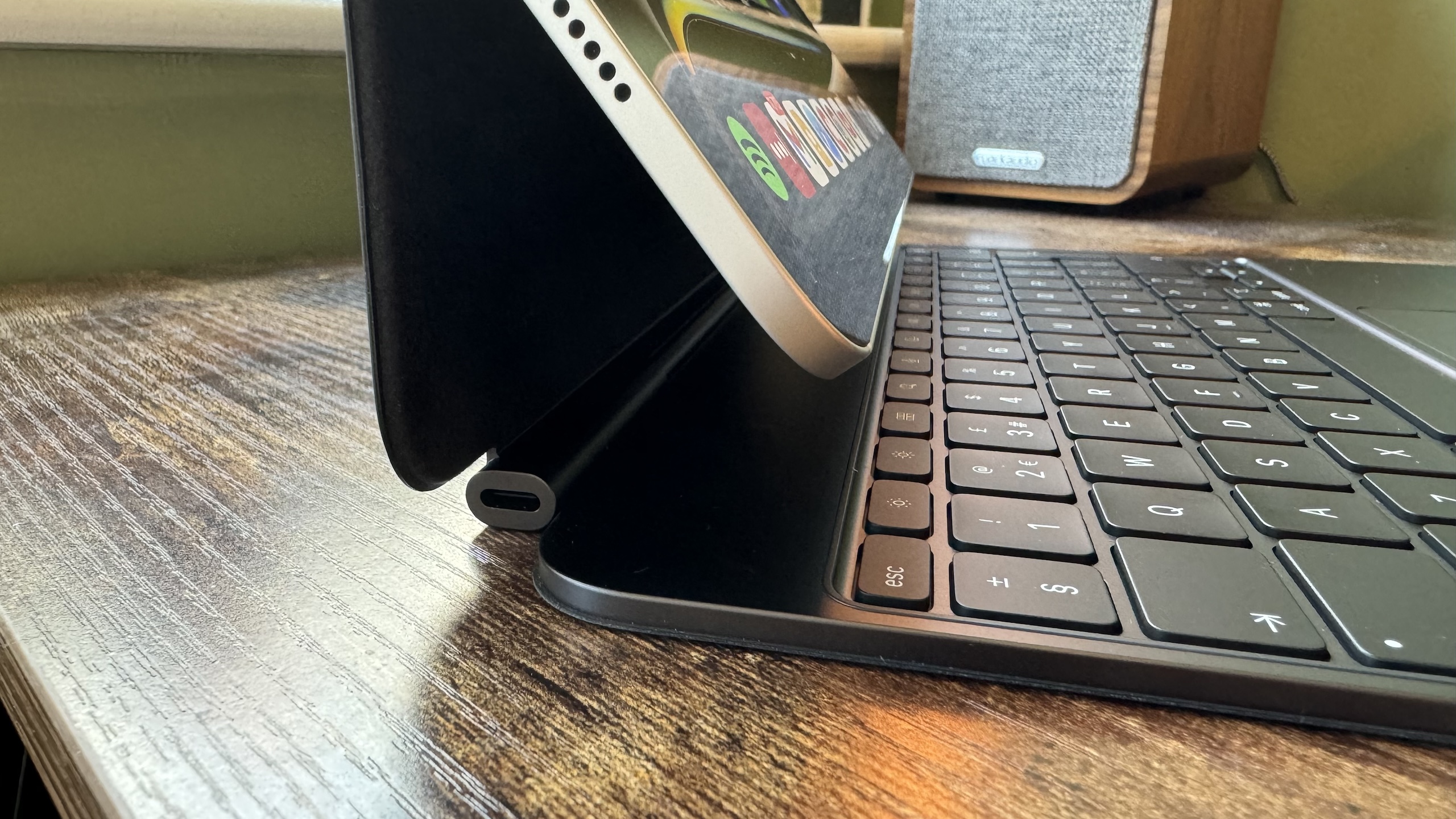
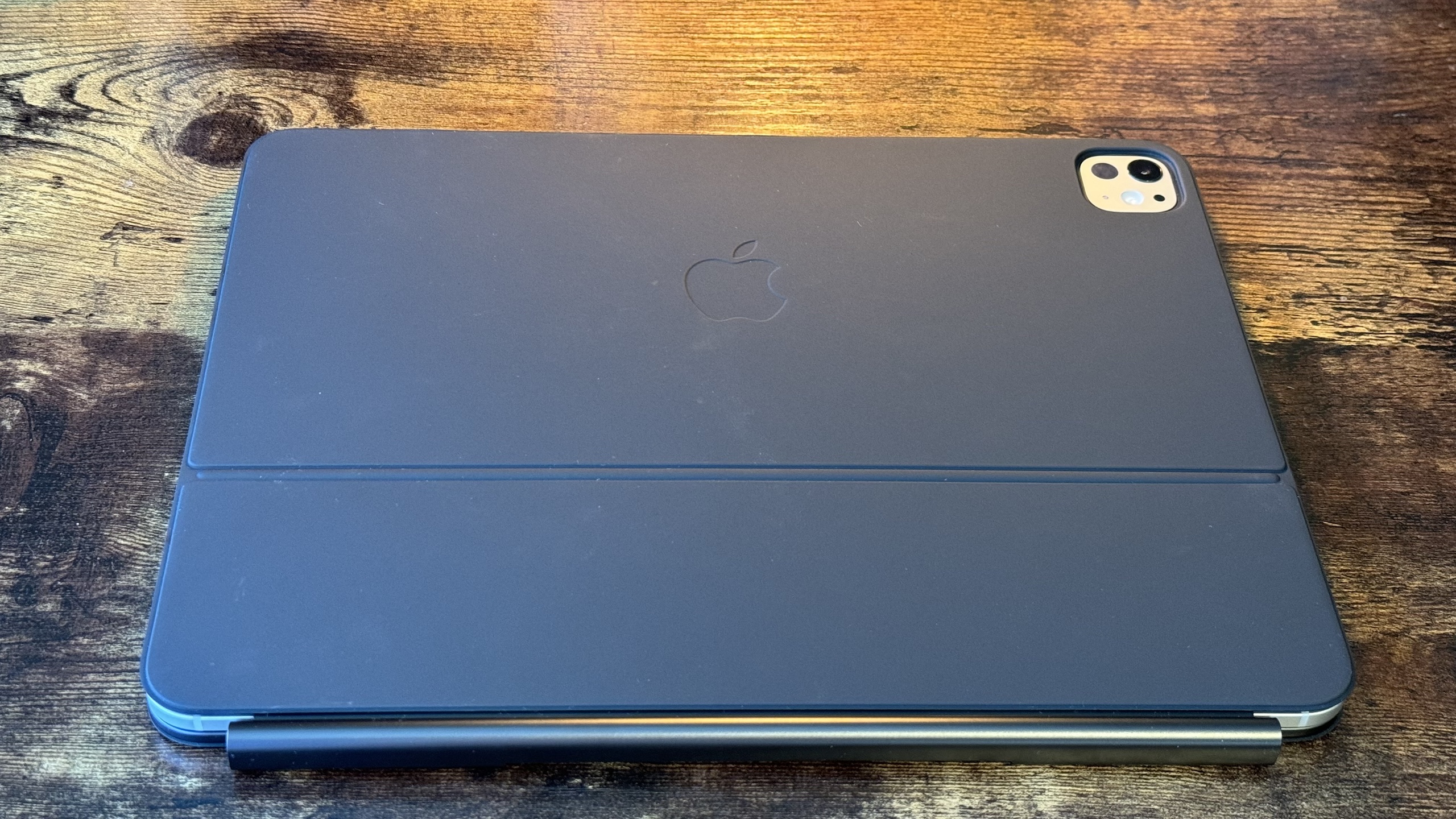
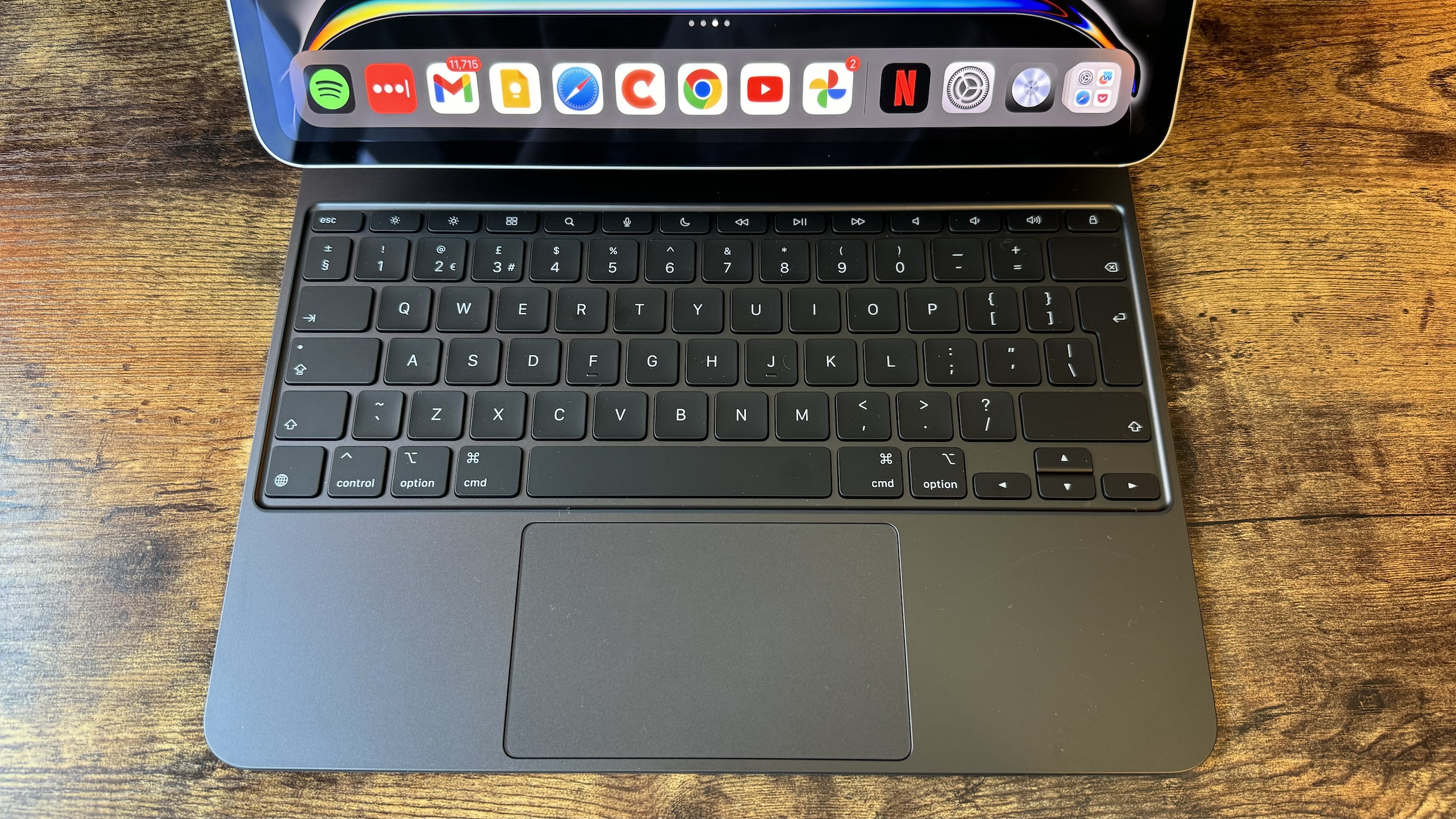
You’ve got a larger glass trackpad to swipe around, a MacBook-style aluminium palmrest, a row of function keys, and a slightly revised USB port placement for easier charging (now faster at 60W pass through) and accessory connection. It retains the same style of magnetic connection as previously present, with an adjustable tilt to the iPad’s placement, and closes down into a thin folio, protecting the iPad itself. It feels more Mac-like than ever before and is comfortable to type at length on — even if iPadOS isn’t quite as intuitive to navigate with a trackpad as macOS is. It feels better when used at a desk than in your lap: although the keys have good, comfortable travel, the overall thinness can make it feel like you’re tapping away onto your legs themselves.
iPad Pro (2024, M4): Competition
Apple is in a league of its own when it comes to tablets. And the iPad Pro is in a league of its own even within the iPad line-up. It’s the best of the best, with a price tag to match.
But what if you don’t need the best of the best? Or are content to try other form factors?
In that case, turn your attention to the newly-revealed iPad Air 6. It’s now available in broadly similar 11- and-13-inch sizes (bezel differences mean viewable screen area is down just a touch compared to iPad Pro), a new big-screen first for that part of the iPad line up.
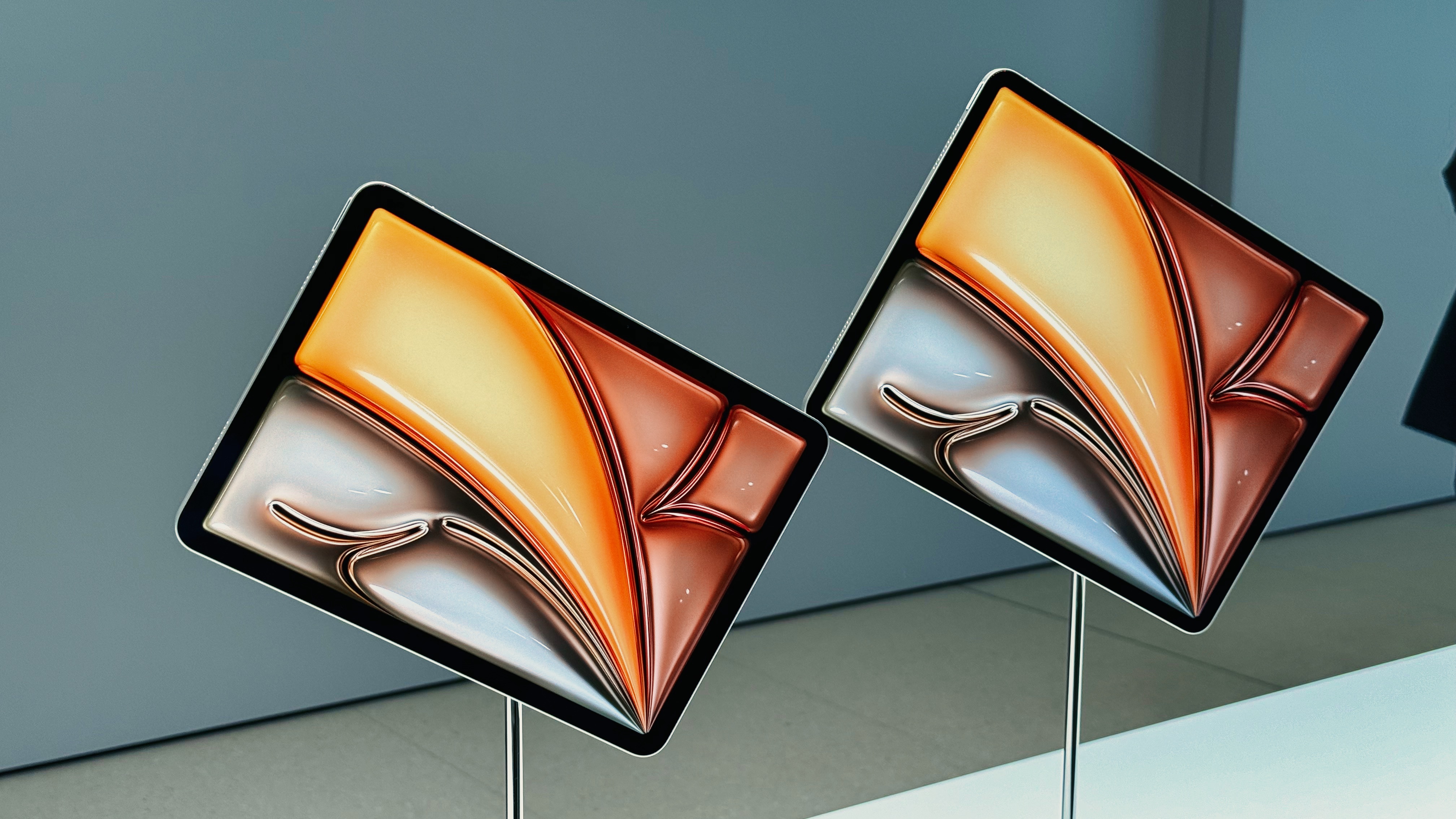
They’re fast too, with the same M2 chips that powered the last generation of iPad Pro, and are compatible with the Apple Pencil Pro and the old version of the Magic Keyboard too. Cameras are less advanced, there’s no ProMotion or OLED display, and security is tied to Touch ID fingerprint scanning rather than Face ID. But otherwise you’re getting a hell of a lot of tablet at a starting price of $599 / $799 for the 11- and 13-inch models respectively, each with 128GB storage. The 11-inch model is a really solid choice for most people content with a smaller screen — that’s a great price for what you’re getting.
With the aforementioned limitations of iPadOS in mind though, those that can live without a touchscreen and hold-in-your-hands form factor should consider an M3 MacBook Air or entry level M3 MacBook Pro if they are looking primarily to work on an Apple device.
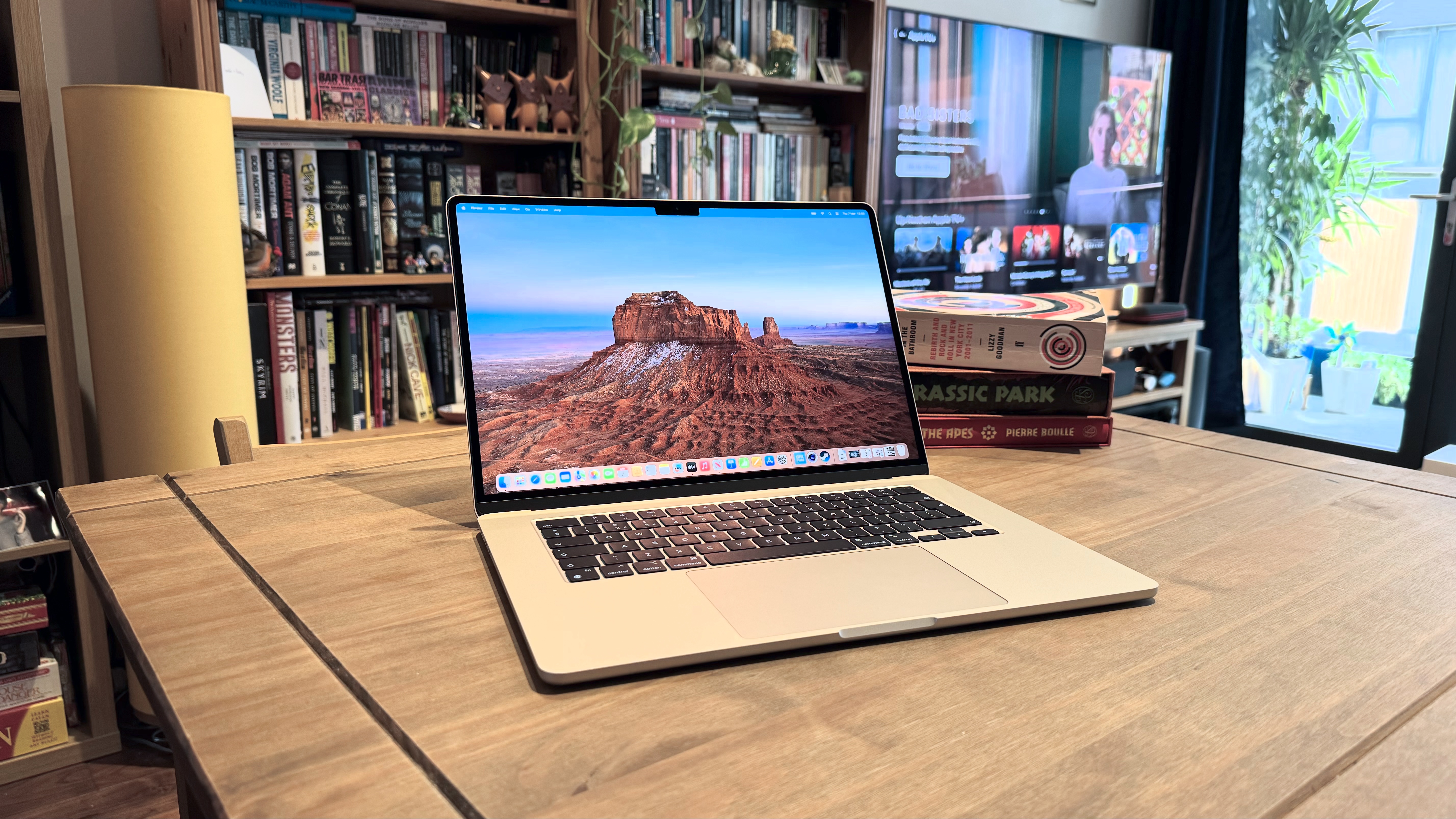
The standard M3 chipsets aren’t that far behind what the M4 is capable of in everyday scenarios, and macOS is a far more confident and intuitive multi-tasking machine. Battery life will be better too — but you won’t be able to sketch with an Apple Pencil Pro on those non-touch displays, and the iPad remains Apple’s best device to just chill with. The 13-inch MacBook Air with M3 starts at $1,299.
Should You Buy It?
Buy the iPad Pro (2024, M4) if…
Don’t buy the iPad Pro (2024, M4) if…
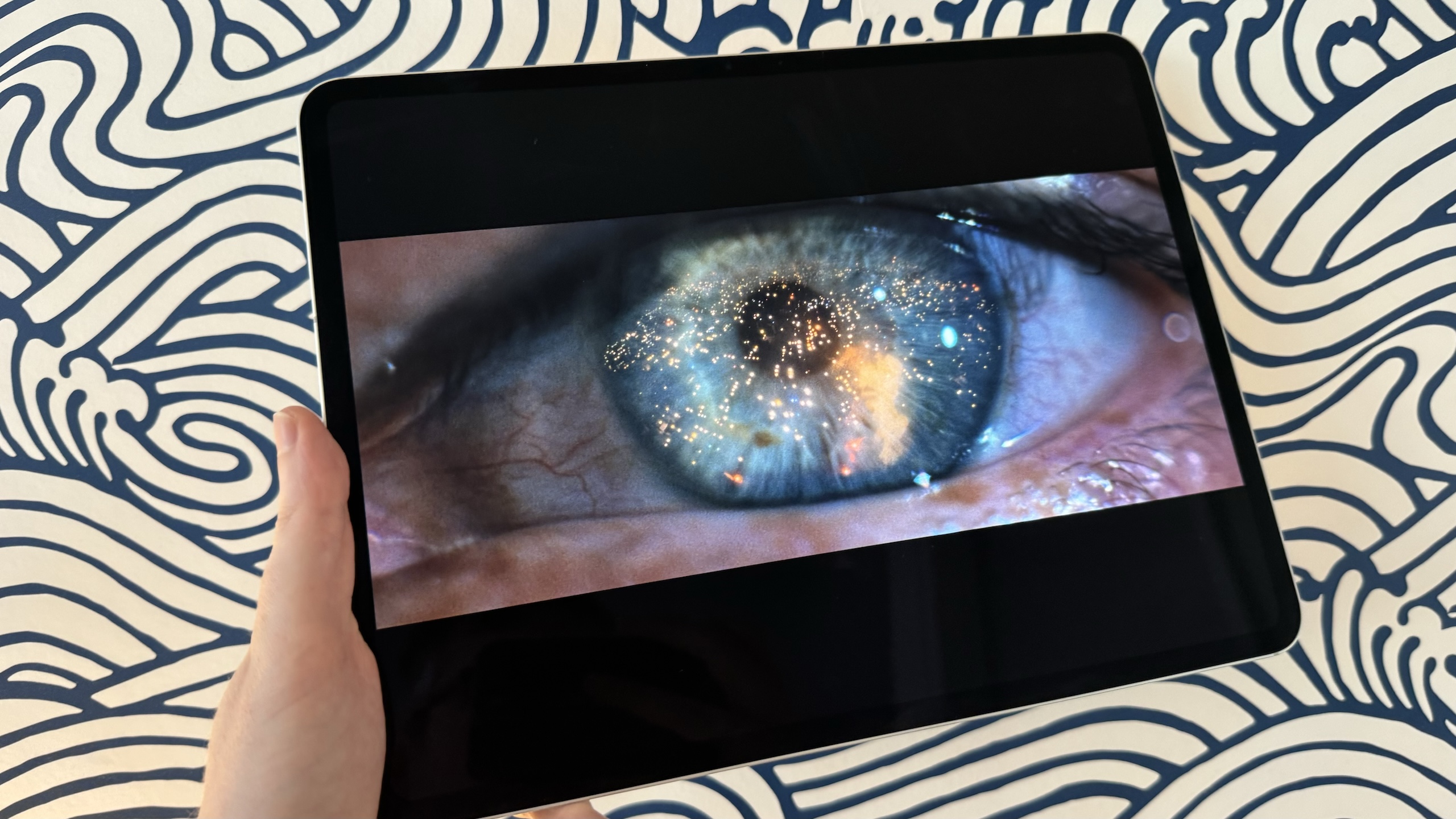
iPad Pro (2024, M4): Verdict
I love the new iPad Pro. It’s powerful, thin, light and has a fantastic screen — with the odd exception noted above that I’m still trying to get to the bottom of. When in the weeds with a single high-end app, it’s astonishing what you can achieve with it. From a hardware perspective, it’s up there with Apple’s finest work.
It’s the sportscar of tablets, luxurious in all the same ways a supercar can be: oodles of power, an unreasonably slick design — and a price tag to match.
But there’s still a disconnect between what you’ll enjoy doing on this device, and what you’d want to enjoy doing on this device. There’s all the power here to make this the one device you take to work with you — but when you start wrestling with multi-tasking on iPadOS and with the Stage Manager interface, it just feels so frustrating.
I’m not a Stage Manager master… but that’s perhaps the point. I don’t want to have to master a whole new way of working if it’s not intuitive out of the gate, and even with a couple of years of revisions at this point, it still isn’t. And an intuitive understanding of how you interact with the iPad has been one of the line’s strongest selling points since its inception. Layer complications on top of that simple OS base, and it starts to buckle under the weight of what someone wants to be able to do with an M4 chip, and what they can do without butting heads against some arcane Stage Manager function or limitation.
It’ll be hard to go back to my 11-inch M2 iPad Pro after living with the M4 model. It’s the sportscar of tablets, luxurious in all the same ways a supercar can be: oodles of power, an unreasonably slick design — and a price tag to match. Like a sportscar, unless you really know how to handle it, you probably don’t need it — but that’s not going to stop you from wanting one. If iPadOS could keep up with the nitro-fuelled engine under the hood, that want could become a genuine need for pros otherwise looking at a MacBook. We’ll have to wait to see what iPadOS 18 brings to the table. For now, we’ll have to be satisfied with what it is: Just the best iPad Apple’s ever made.
Bottom line: The most advanced iPad ever made, with a superb screen, oodles or power and a super-slim frame.







